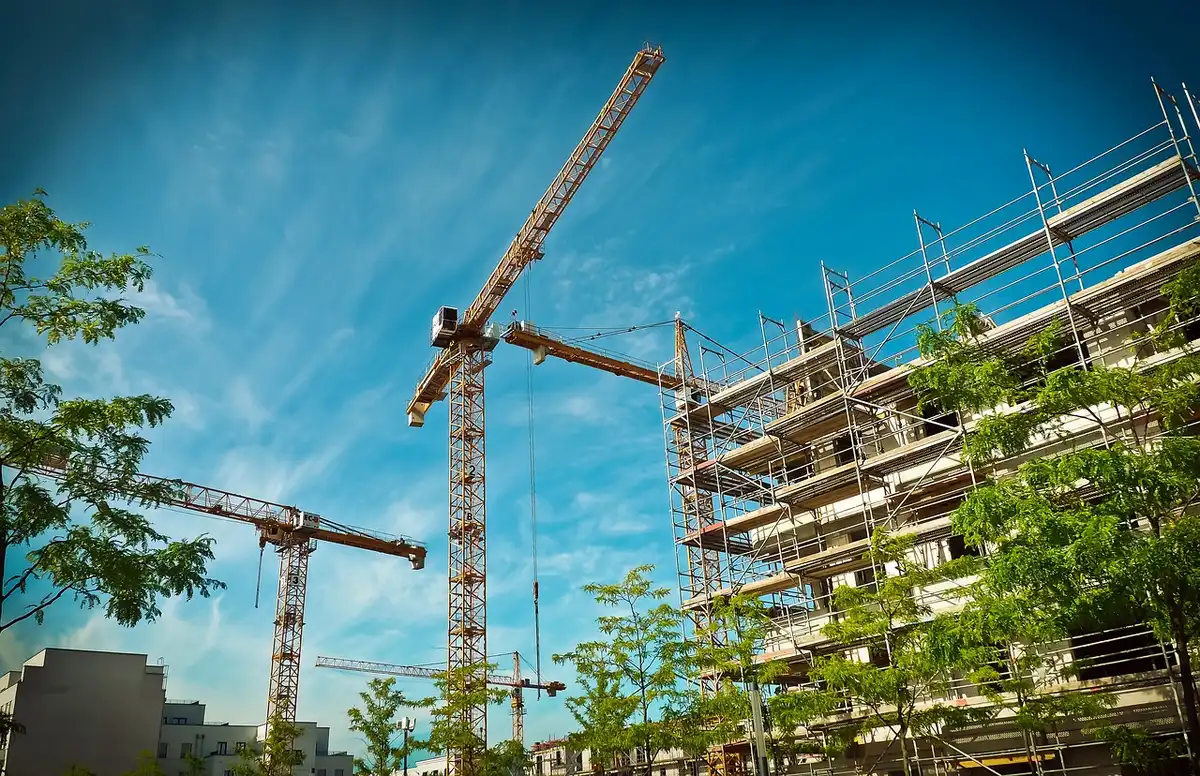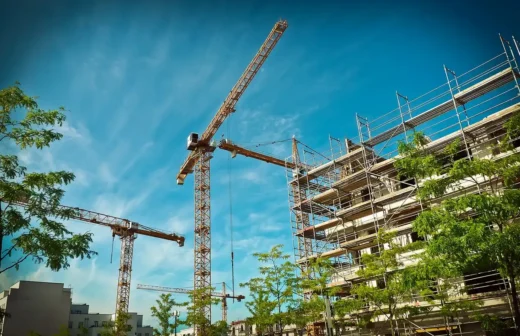Extend construction equipment lifespan methods guide, Building tools advice
7 Ways to Extend the Lifespan of Your Construction Equipment
2 May 2025
Construction equipment represents a substantial capital investment for any company in the industry. A single mid-sized excavator can cost upwards of $250,000, while specialized equipment often costs more than $1 million.
When this equipment fails prematurely, the financial impact extends beyond replacement costs to include project delays, worker downtime, and missed deadlines.
Based on field experience and industry best practices, these seven strategies can significantly extend the lifespan of your equipment and protect your investment.
1. Implement Thorough Cleaning Regimens
Accumulated debris causes far more than cosmetic issues. Dirt and mud trapped against metal components create perfect conditions for accelerated corrosion, while buildup on cooling systems frequently leads to overheating and engine damage. In hydraulic systems, even microscopic particles can damage precision components, causing jerky operation and eventual system failure.
Establish end-of-day cleaning protocols that cover critical areas, including undercarriages, cooling systems, tracks and wheels, and engine compartments. Prioritize high-pressure cleaning of cooling fins, radiators, and hydraulic coolers.
For hydraulic systems, ensure oil filters are regularly inspected and replaced. Schedule quarterly deep cleaning for all equipment, focusing on areas that daily maintenance might miss, such as electrical connections and control linkages.
Creating a dedicated cleaning station at each job site with appropriate tools and supplies encourages compliance. Many companies find success by assigning specific team members to verify that cleaning procedures have been appropriately completed before equipment is shut down for the day.
2. Invest in Proper Operator Training
Equipment often fails due to operational errors rather than mechanical deficiencies. Operators without sufficient training frequently exceed design tolerances, improperly sequence operations, or miss early warning indicators of developing problems.
Industry studies indicate that operator-related failures account for approximately 30-40% of premature equipment breakdowns.
Develop equipment-specific training programs that cover operational boundaries, proper technique, and early warning signs. Include both classroom and hands-on components, with periodic refresher sessions to prevent skill drift.
Create detailed operation manuals with daily startup and shutdown procedures for each piece of equipment. Institute a mentor program where experienced operators supervise new team members until proficiency is demonstrated consistently across various operating conditions.
Simulator training has proven exceptionally effective for high-value equipment. Though initially expensive, simulators allow operators to practice challenging maneuvers and emergency procedures without risking actual equipment.
Companies report accelerated skill development and significantly reduced operator-caused damage after implementing simulation training.
3. Utilize Professional Storage Solutions
Equipment deteriorates rapidly when improperly stored between projects or during seasonal downtime. Construction sites demand durable, weather-resistant temporary storage solutions to keep valuable equipment secure and fully protected from the most extreme elements.
Their comprehensive guide on construction equipment storage highlights how appropriate storage significantly extends equipment lifespan by preventing weather damage, theft, and component deterioration.
Secure appropriate storage facilities for both active sites and off-season needs. Weather-resistant containers provide protection from environmental damage while offering security against theft and vandalism.
For longer-term storage, consider climate-controlled options to prevent moisture accumulation. Develop site-specific storage plans that account for equipment access requirements and project phasing.
Many contractors find that investing in portable storage containers with built-in office space creates dual functionality. These units not only protect equipment but also provide on-site administrative space, improving project coordination while maximizing the utility of storage investments. Storage containers should include proper ventilation to prevent condensation buildup, particularly in humid climates where moisture-related damage is common.
4. Adhere to Manufacturer Maintenance Schedules
Generic maintenance approaches invariably miss equipment-specific requirements. Each piece of machinery has unique service points, component vulnerabilities, and maintenance intervals that must be addressed individually.
Manufacturers establish these guidelines based on extensive testing under various operating conditions, making their recommendations far more reliable than generalized industry practices.
Create detailed maintenance schedules based on manufacturer specifications rather than generalized industry practices. Track operational hours precisely and prioritize preventive maintenance over reactive repairs. Develop equipment-specific maintenance checklists that technicians must complete and document. Implement digital tracking systems that alert maintenance supervisors when service intervals approach, ensuring timely completion of required maintenance.
Equipment manufacturers often provide digital maintenance management tools specific to their product lines. These systems can be integrated with fleet management software to create comprehensive maintenance oversight.
Some contractors have found success by establishing relationships with manufacturer-certified service providers for specialized equipment, ensuring experts perform critical maintenance procedures.
5. Implement Fluid Analysis Programs
Internal components often show signs of deterioration long before catastrophic failure. Regular fluid analysis provides invaluable early warning by detecting metal particles, contamination, and chemical changes that indicate developing problems.
This proactive approach converts unpredictable breakdowns into planned maintenance events, dramatically reducing downtime and repair costs.
Partner with a reputable fluid analysis laboratory to establish sampling protocols. Create baseline measurements for new equipment and track changes over time, intervening when parameters exceed acceptable thresholds. Implement consistent sampling procedures to ensure result accuracy, including proper cleaning of sampling points and use of appropriate containers. Schedule analysis based on equipment criticality and operating conditions, with more frequent testing for equipment operating in severe environments.
Developing trending reports for each piece of equipment builds a performance history that becomes increasingly valuable over time. These reports often reveal patterns specific to equipment models or operating conditions that allow for predictive maintenance before failures occur.
Some contractors have reduced catastrophic failures by over 60% through comprehensive fluid analysis programs.
6. Adopt Vibration Analysis Monitoring
Excessive vibration frequently precedes major component failures, particularly in powertrains, hydraulic systems, and structural elements. Detecting these changes early allows for planned maintenance rather than emergency repairs.
Modern vibration analysis can identify specific failing components, their location, and approximate remaining service life, revolutionizing maintenance planning.
Integrate vibration analysis into routine equipment inspections. Establish normal operating parameters for each major component and investigate deviations promptly, addressing root causes rather than symptoms. Train maintenance personnel to properly use vibration analysis equipment and interpret results accurately. Create documentation procedures that track vibration trends over time, allowing for early identification of developing issues.
Portable vibration analyzers have become increasingly affordable and user-friendly, making implementation practical even for smaller contractors. For critical equipment, consider installing permanent monitoring systems that provide continuous data collection. Many contractors begin with quarterly analysis and increase frequency when abnormal patterns emerge, allowing for cost-effective implementation.
7. Establish Component Rebuilding Programs
Complete replacement of worn components often represents unnecessary expense. Many critical parts can be successfully rebuilt at 50-60% of replacement cost while restoring original performance specifications. This approach not only reduces direct parts costs but often results in faster repair completion due to improved parts availability.
Identify components suitable for rebuilding and develop relationships with qualified rebuilding specialists. Consider maintaining an inventory of commonly needed rebuilt components to minimize downtime during repairs. Implement quality control procedures to verify rebuilt components meet performance specifications. Track the service life of rebuilt components compared to new replacements to validate economic benefits.
Some contractors have established in-house rebuilding capabilities for frequently replaced components, particularly hydraulic cylinders and pumps. While requiring initial investment in equipment and training, these programs typically achieve return on investment within 12-18 months through reduced parts costs and minimized downtime. For contractors without in-house capabilities, core exchange programs with reliable rebuilders offer similar benefits with lower initial investment.
The Financial Impact
The construction industry’s average equipment replacement cycle can be extended by 30-40% through the consistent application of these strategies. For a typical mid-sized contractor with a $5 million equipment fleet, this extension represents potential annual savings of $300,000 to $700,000 in reduced capital expenditures and decreased repair costs.
Additional benefits include improved project scheduling reliability, reduced emergency repair costs, and enhanced resale value when the equipment is eventually replaced.
While implementing these practices requires organizational commitment and process discipline, the return on investment is substantial, with reduced capital expenditures, decreased downtime, and improved project reliability.
Companies that have adopted comprehensive equipment management programs report achieving a full return on investment within 8-12 months, with ongoing benefits throughout the equipment’s service life.
Comments on this guide to Extend construction equipment lifespan methods article are welcome.
+++
Construction Safety
Construction Safety Posts
Office building safety takes centre stage
Prevent construction site accidents
How architecture adapts to evolving safety regulations
Common construction site injuries
Construction industry health and safety importance
Why Construction Safety Is Important
Best practices to improve construction site safety
+++
Building Articles
Comments / photos for the Extend construction equipment lifespan methodsadvice page welcome.







